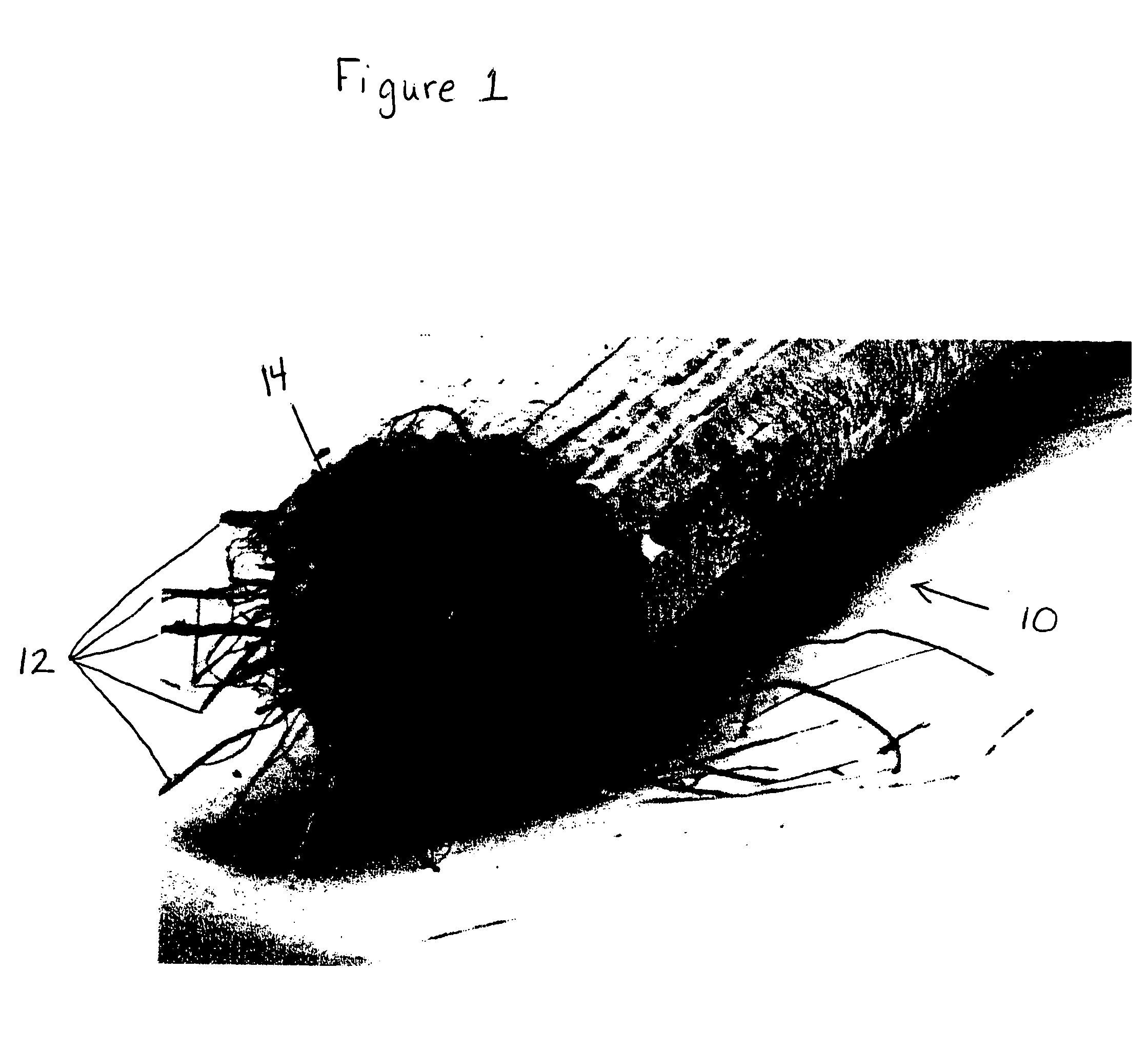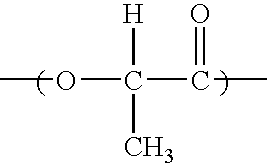Fibers comprising starch and biodegradable polymers
a biodegradable polymer and fiber technology, applied in the field of environmental degradation-friendly fibers comprising starch and biodegradable polymers, can solve the problems of less commercial success, compositions with excellent degradability only limited processability, compositions which are more easily processable, etc., and achieve the effect of high attenuation
- Summary
- Abstract
- Description
- Claims
- Application Information
AI Technical Summary
Benefits of technology
Problems solved by technology
Method used
Image
Examples
example 4
[0110] In light of the findings in Comparative Example 3 and the weakness of these fibers, a different blend composition for compounding was utilized. A 50 / 50 solution of starch in water at 90° C. was used. The starch was allowed to soak in the water until fully dissolved and the solution was clear. This starch solution was mixed in an amount equivalent to 50 parts solid StarDri 100, along with 12 parts amorphous PLA, 37 parts semi crystalline PLA and 10 parts glycerin. It was noted that this blend did not exhibit any granular structure consistent with starch that has not been fully destructured. The blend was compounded as follows: the high melting temperature semi-crystalline PLA (Tm≈170° C.) was added to the twin-screw mixer at 210° C. for 5 minutes until completely mixed. The temperature was then decreased to 130° C., at which time the starch solution and glycerin was added and the water vapor flashed off. Once the vapor was flashed off, the amorphous PLA was added and the mixtu...
example 5
[0113] The blend was compounded as in example 3 with 74 parts amorphous PLA, 24 parts StarDri 100 and 6 parts glycerine. The properties are in Table 1.
example 6
[0114] The blend was compounded as in example 3 with 27 parts PLA, 64 parts StarDri 100 and 9 parts glycerine. The properties are in Table 1.
PUM
| Property | Measurement | Unit |
|---|---|---|
| melting temperature | aaaaa | aaaaa |
| melting temperature | aaaaa | aaaaa |
| melting temperature | aaaaa | aaaaa |
Abstract
Description
Claims
Application Information
 Login to View More
Login to View More - R&D
- Intellectual Property
- Life Sciences
- Materials
- Tech Scout
- Unparalleled Data Quality
- Higher Quality Content
- 60% Fewer Hallucinations
Browse by: Latest US Patents, China's latest patents, Technical Efficacy Thesaurus, Application Domain, Technology Topic, Popular Technical Reports.
© 2025 PatSnap. All rights reserved.Legal|Privacy policy|Modern Slavery Act Transparency Statement|Sitemap|About US| Contact US: help@patsnap.com



